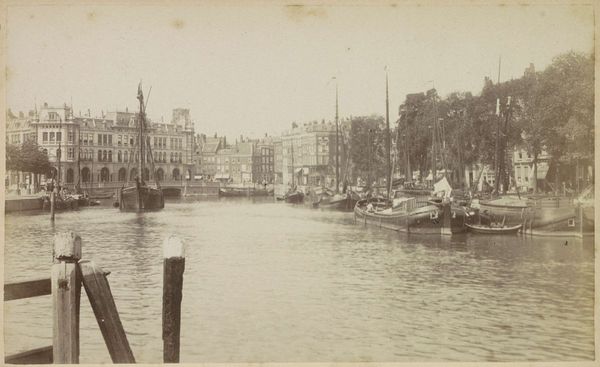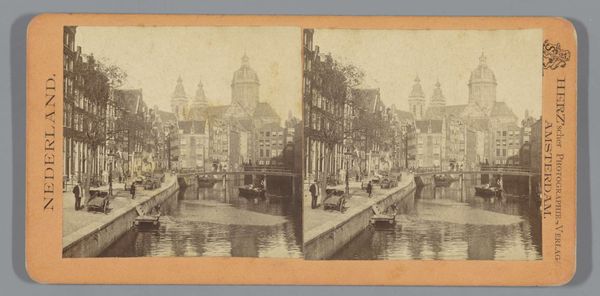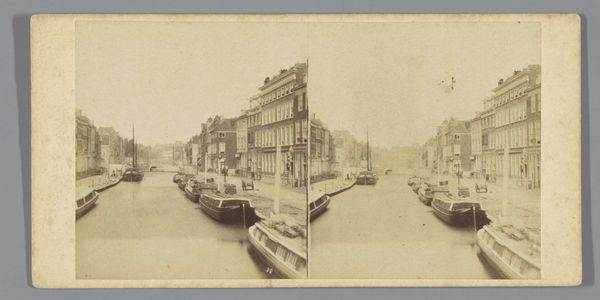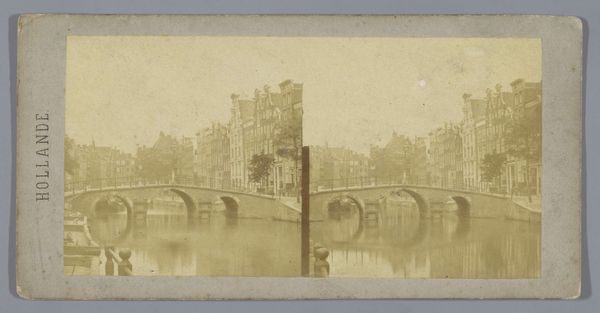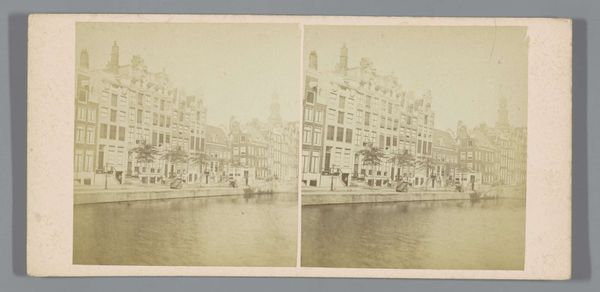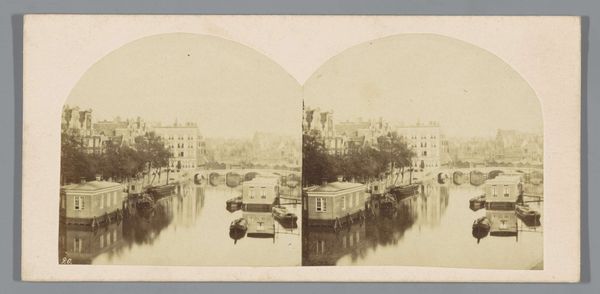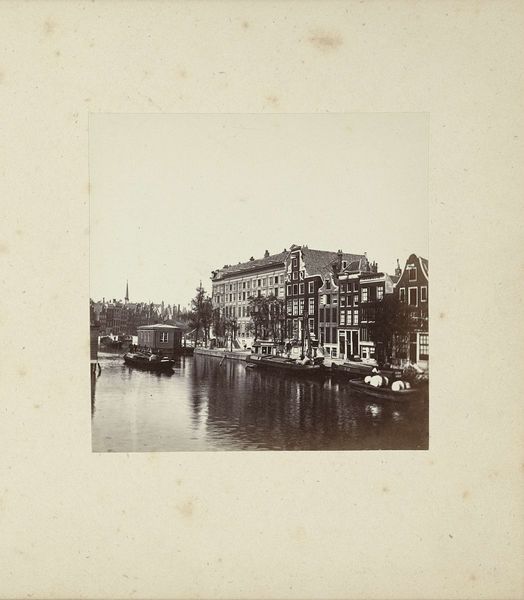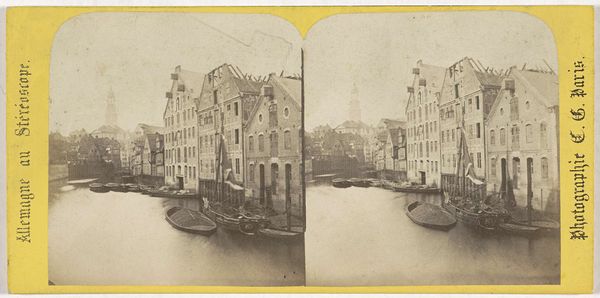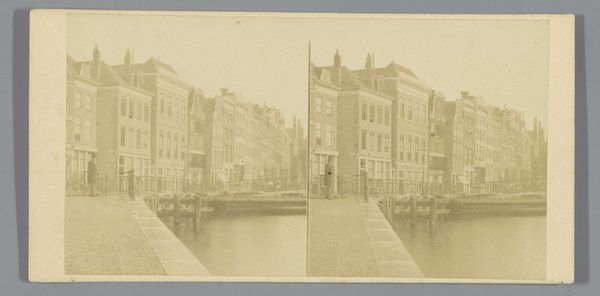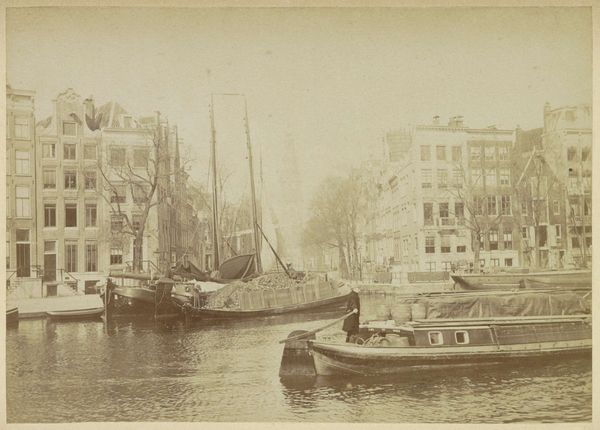
Dimensions: height 85 mm, width 167 mm
Copyright: Rijks Museum: Open Domain
Curator: Today we are looking at "Sluis aan de Singel in Amsterdam, mogelijk de Haarlemmersluis" which translates to "Lock on the Singel in Amsterdam, possibly the Haarlemmersluis". It’s a daguerreotype by Charles-Henri Plaut from 1858. Editor: Immediately striking is the somber tone. It’s sepia-toned of course, being a daguerreotype, but the scene itself is still. Almost as if the color has been leached away, mirroring a stillness in the composition itself. The solidity of the stone structure at the bottom seems to ground the ethereal water and light. Curator: Indeed. The stone is not merely structure; the locks themselves hold immense symbolic weight. Amsterdam relied and continues to rely on them to control its relationship with water, the source of its power, trade, and potential ruin. It shows both prosperity and risk, wouldn’t you say? Editor: Absolutely. Thinking about how water functions here…there's almost a grid imposed upon its flow, wouldn't you say? We see that geometry of canal against the flowing of water. The near structure’s stark geometry strongly opposes any sense of the pictorial and dominates what is left of it. It gives it a certain harsh realism. Curator: The perspective also draws the eye far into the frame. Notice how the building facades begin to flatten the further back we go. It mirrors how the past fades but also continues to influence us; here you see continuity over time and generations reflected on the water and held by the stoic buildings on the right side of the scene. Editor: True. And even that subtle haze at the distant end of the canal works to compress the space while making one highly aware of the surface plane of the photograph itself. The structure has its effect but as a material object. Curator: It seems Plaut sought to capture more than just a place. It encapsulates a city’s history in a single frame. It captures something real but also a certain nostalgia and memory. Editor: Agreed, the more I look at it, the more I sense that intersection of rigid structure and fluid motion defines not only the composition, but also, as you pointed out, the very essence of Amsterdam's existence, its ongoing dance with nature.
Comments
No comments
Be the first to comment and join the conversation on the ultimate creative platform.
